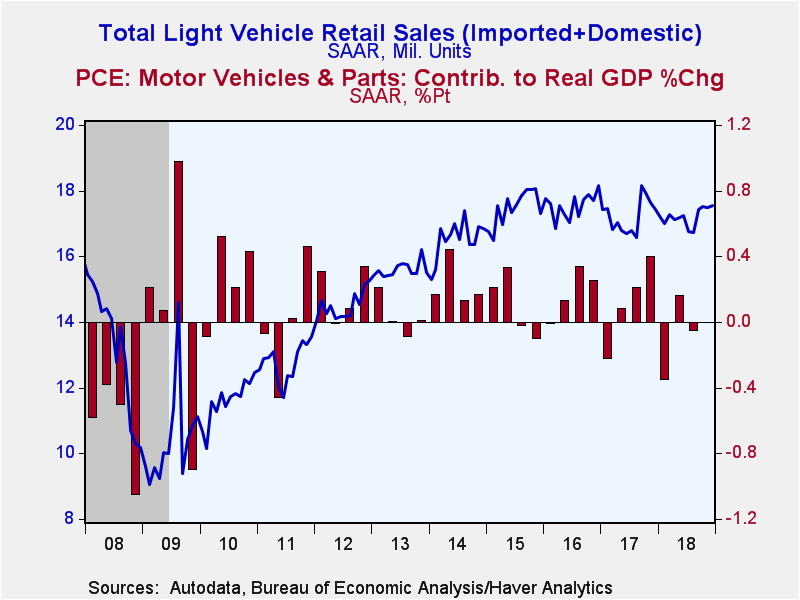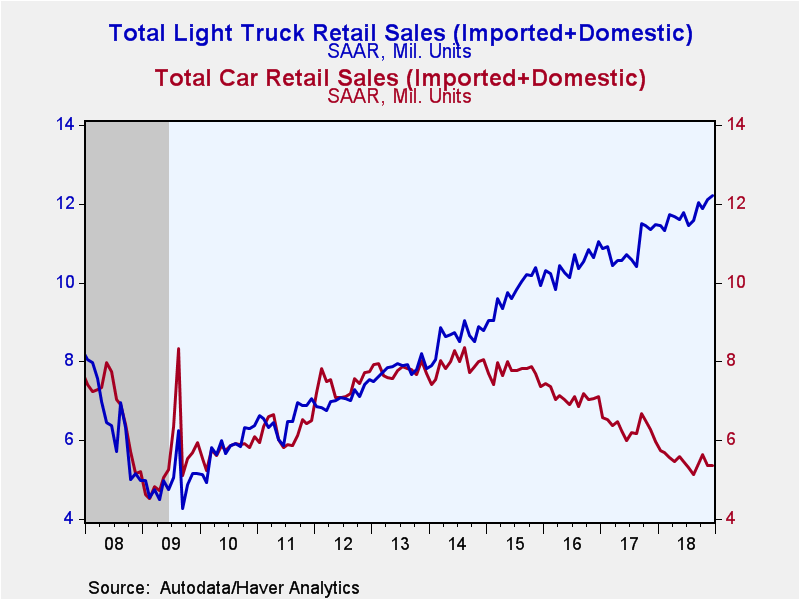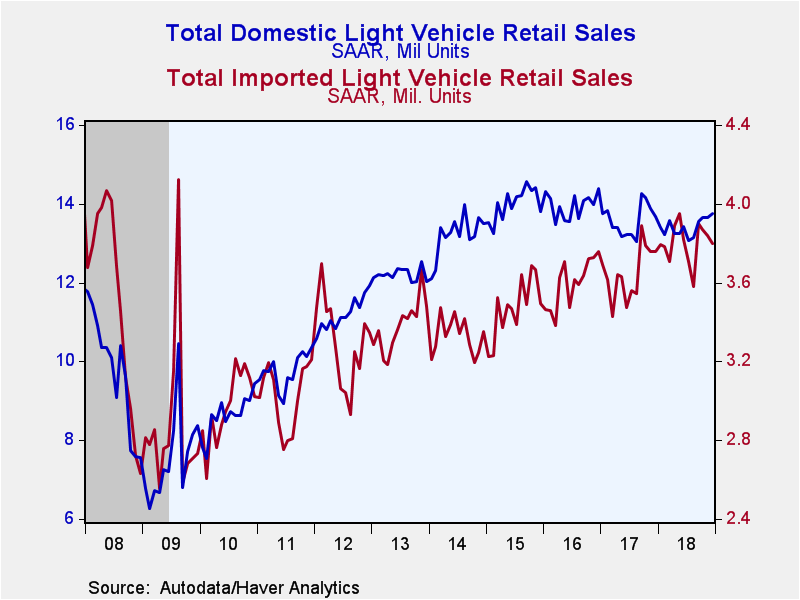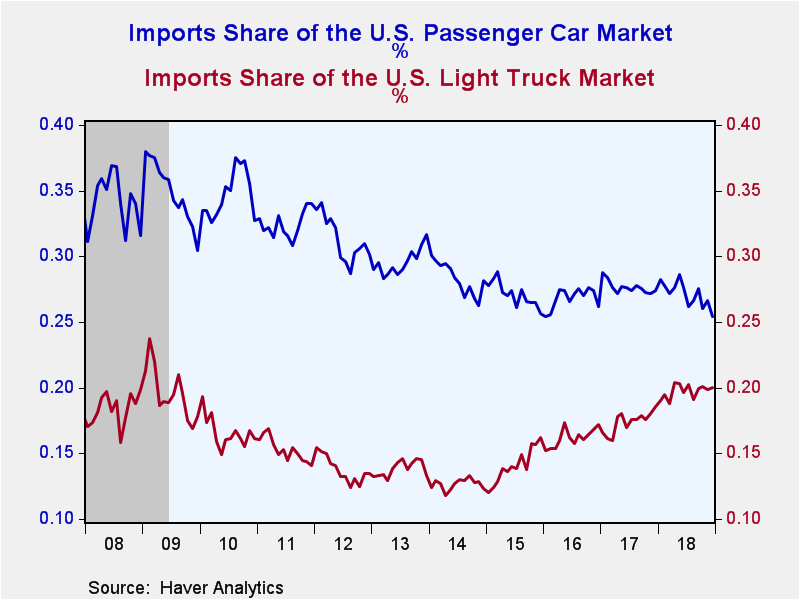 Global| Jan 04 2018
Global| Jan 04 2018U.S. Light Vehicle Sales Remain Solid for Another Year
Summary
Sales of light vehicles edged up 0.3% (0.7% y/y) in December to 17.55 million units (SAAR), which was the highest level in twelve months. For the full year 2018, light vehicle sales totaled 17.21 million units, topping 17 million for [...]
Sales of light vehicles edged up 0.3% (0.7% y/y) in December to 17.55 million units (SAAR), which was the highest level in twelve months. For the full year 2018, light vehicle sales totaled 17.21 million units, topping 17 million for a fourth consecutive year.
Passenger car sales eased 0.4% (-10.3% y/y) last month to 5.35 million units. Sales of domestically made cars picked up by 1.0% (-7.8% y/y) to 3.99 million units, partially reversing a decline in November. Meanwhile, sales of imported passenger cars posted an offsetting decline of 4.9% (-16.8% y/y) to 1.36 million units. That decline was the third in a row and the sixth in the past seven months.
Light truck sales increased 0.7% (6.4% y/y) in December to 12.21 million units after a 1.9% gain in the prior month. Sales approached the record high, nearly matching the sales during the July 2005 “employee discount” promotions. Sales of domestically-produced light trucks rose 0.5% (4.4% y/y) to 9.76 million units following a 2.2% rise in November. Sales have been moving steadily upward toward a record high. Sales of imported light trucks improved 1.2% (14.8% y/y) to a new record of 2.44 million units.
Trucks’ share of the U.S. vehicle market continued to rise last month, reaching a record 69.6%. This compared to 47.3% at the low during all of 2009.
Imports’ share of the U.S. vehicle market eased last month to 21.7%, the third consecutive decline. This share has fallen from a peak of 27.6% during all of 2009.
U.S. vehicle sales figures can be found in Haver's USECON database. Additional detail by manufacturer is in the INDUSTRY database.
Peter D'Antonio
AuthorMore in Author Profile »Peter started working for Haver Analytics in 2016. He worked for nearly 30 years as an Economist on Wall Street, most recently as the Head of US Economic Forecasting at Citigroup, where he advised the trading and sales businesses in the Capital Markets. He built an extensive Excel system, which he used to forecast all major high-frequency statistics and a longer-term macroeconomic outlook. Peter also advised key clients, including hedge funds, pension funds, asset managers, Fortune 500 corporations, governments, and central banks, on US economic developments and markets. He wrote over 1,000 articles for Citigroup publications. In recent years, Peter shifted his career focus to teaching. He teaches Economics and Business at the Molloy College School of Business in Rockville Centre, NY. He developed Molloy’s Economics Major and Minor and created many of the courses. Peter has written numerous peer-reviewed journal articles that focus on the accuracy and interpretation of economic data. He has also taught at the NYU Stern School of Business. Peter was awarded the New York Forecasters Club Forecast Prize for most accurate economic forecast in 2007, 2018, and 2020. Peter D’Antonio earned his BA in Economics from Princeton University and his MA and PhD from the University of Pennsylvania, where he specialized in Macroeconomics and Finance.










